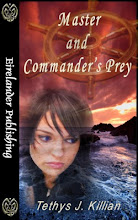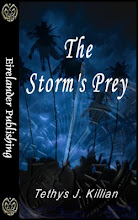Ready for a boring lesson that'll have you sleepy by the time you get to the third paragraph? Great, so let's get it rolling.
Following on T,J.'s post about the building block method, I'm gonna expand on another building method (which is often rightfully called plotting) that enables you to get a logic thread in your story and allows you to carry logic from the start to the finish line.
Now, I am what is called a compulsive and completely anal plotter, so this might make sense to plotters out there. Pansters, I'll try to be clear by using examples.
I usually follow the route gone by almost all romances. Start, middle, black moment, end.
Basically what does it mean? It's like a train with the wagons coming one behind the other.
Start - obvious - intro of character, plot, leading us into the story (don't worry, I'll have examples further down!)
Middle - where things and issues are being dealt with, in a romance, it's attraction, falling in love, confessing the love.
Black moment - well, where it all goes wrong and you dunno how a happy ending can come about now.
End - resolution of all issues and everything that brought about the black moment.
Let's take this one step further. I usually work with external and internal conflict in the start-middle part of a story, and the black moment usually stems from a mix of the two and what they brought to the story. The end/resolution goes back to internal conflict and what was the root of the black moment, easing it all to bring an HEA.
External conflict refers to whatever conflict in the plot that is external to the characters, that is out of their hands if you want. These are environmental factors, fate, that sort of thing. External conflict bring your characters together and gets the plot moving.
Internal conflict refers to what is inside your characters. Their mindset, prejudices, ideas, convictions, beliefs. Whatever is inherent to them that may hinder the progression to HEA. Internal conflict is usually the lead-in to the black moment. It then takes resolving these internal conflict issues to have the H/h together again for your HEA.
Allright, I've confused everyone now, so let me try to use an example. Or two. I'll pick the movie How To Lose A Guy In Ten Days and the book Pride and Prejudice. I suppose everyone is familiar with those.
Let's break those down in the external-internal-black moment-end format.
How To Lose A Guy In Ten Days, for short I'll write 'movie', ok?
The title says it all. You have heroine Kate Hudson and hero Matthew McConnaughey (for short, we'll use McYummy). She writes How-to articles for a women's mag, and must show how to lose a guy in 10 days. Writing this will mean she can move up the editorial ladder and write about more serious stuff than shoes and scarves.
He is fighting for an advert campaign, and has two absolute cold, heartless, biatches as rivals.
These two are your H/h, you need to bring them together, fall in love, throw in a wrench to break them up, and then make them end up together again. How do you do this?
You bring them together through external conflict. How did they do it? The 2 biatchy rivals come to the mag, where the editor tells them Kate is doing this article. She has to pick a guinea pig. Now, the rivals need to have McYummy out of the picture, so they bait him - a bet wins the contract: he'll have to date the girl of their choice and have her fall in love with him within 10 days. They want him to lose, so they sent him to Kate, who has been told she must 'lose' McYummy in 10 days.
Neither Kate nor McYummy had a hand in there, yet they're brought together and have to stick to it now (external to them). Both have different motives, But motives are part of characterization (prolly another post to come soon).
Now, middle of the movie. Kate has done all she could think of to lose McYummy (acting on the external conflict), but the guy is stickier than Power Glue. He always comes back. Then he takes her home to his parents' place, where Kate learns she's the first girl he's brought home (external conflcit is easing into internal conflict - the parameters are merging). Now, she knows she's 'playing' him, she needs her article, but the woman in her, not the reporter, is falling in love with him. She is deceiving him - that's the internal conflict! McYummy too has issues. He's falling for her, but it's all about a bet, and he has to win the contract, not the girl exactly. That's his internal conflict.
Both reason the other need not know and won't know once the article and the bet is over. Can you already hear 'bad move'?
Fast forward - he's won his bet and won the contract as Kate confesses she loves him to his boss and rivals. She's written her article and can now write 'serious' stuff. But then Kate learns it was all a bet, and when McYummy knows he's lost her, her boss tells him how she's done this fab job on a poor guinea pig for 10 days.
You know all hope is lost here! That's the black moment.
Yet, by the end credits, the 2 are together in an HEA. Turns out they worked out their issues and each explained where they were coming from. A bit simplistic, but it shows you how you get to the end,
Now, Pride and Prejudice. Less details here, but almost same plot progression.
Darcy and Lizzie meet at the ball - Lizzie's sister Jane is invited to Bingley's estate, she falls sick and Lizzie goes to see her, ending up spending the night - Darcy has time to kill and is thus in the area with his best friend - external conflict.
Middle of the book - Lizzie learns Darcy discouraged Bingley from proposing Jane. Her prejudice plays in then (internal conflict). Darcy thinks the girls are hunting for rich husbands (internal conflict). Enters the scene at Lady Catherine de Burgh's place - issue about Lizzie's advanced age, how Darcy is 'promised' to the lady's sickly daughter, and how the Bennets are so further down the class hierarchy, how could they even pretend they could land Darcy and Bingley?
Big fight then between Darcy and Lizzie - the black moment. They almost confess their love, it's palpable in the air, but both know they've crossed a line they shouldn't have crossed in the argument.
Resolution - when Lizzie's sister Lydia runs away with Wickham, Darcy is the one who restores the Bennet family's honour. Lizzie has to revise her judgement, and Darcy does too when he realises Jane loves Bingley and he shouldn't have told his best friend to stay away from her because she was a gold digger. Darcy proposes, Bingley proposes too, and Mrs Bennet ends up with 3 of her 5 daughters married off in the space of a few weeks.
See how the progression plays in all of them? It starts with a simple premise. You expand on it, thinking of the circumstances of the story, and you find your external conflict. Next, you bring your characters in the spotlight - internal conflict takes center stage. Then you get sadistic and break them up, only to play matchmaker again and being an HEA.
Clear as mud, right?
Any questions, just holler!
 Aasiyah Qamar - Cultural romantic fiction, with a twist
Aasiyah Qamar - Cultural romantic fiction, with a twistWith stories set amidst the rainbow nation of Mauritius, a multicultural island in the Southern Indian Ocean, author Aasiyah Qamar brings you tales of today's young women battling life on all fronts and finding love where they least expect it. Indo-Mauritian culture wants to stifle them in traditions, customs and antiquated morals while the world is opening its arms of modernity and globalisation. Where do these women belong? And more importantly, with whom? Find out more about her first release, The Other Side, here.





.jpg)
.jpg)






3 comments:
Great break down of the formula, Z.
Z,
You did a great job at showing how to arrive at the Happily Ever After.
Hugs,
Sandy
Thanks gals!
Now I wonder how many I did confuse here! Lol
Hugs
Z(Aasiyah/Nolwynn)
Post a Comment